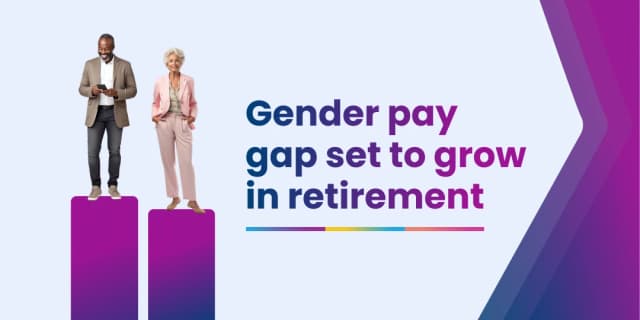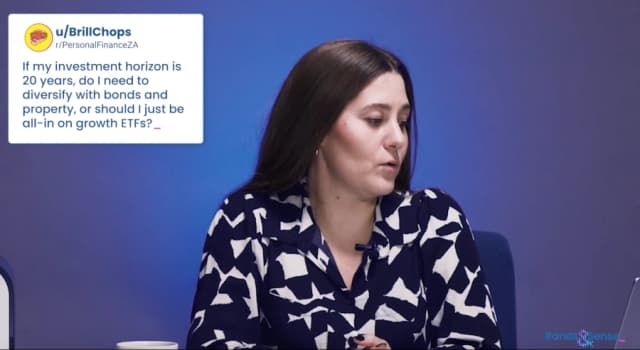Preservation Funds And The Cost Of Cashing Out Early
29 October 2024
Preservation funds are a great option for individuals looking to grow their retirement savings, especially for those in the midst of career transitions or expecting to switch jobs before reaching retirement. If you change employers or experience a shift in your employment status, preservation funds allow you to keep the retirement savings you've accumulated in your current pension or provident fund, while also benefiting from tax advantages and continued investment growth.
A preservation fund is a retirement savings vehicle designed to help you maintain and grow your retirement savings when you change employers or find yourself between jobs. It allows the savings accumulated in a pension or provident fund to be reinvested in a fund of your choice after a job change, instead of being withdrawn prematurely. By preserving your pension or provident fund savings, the capital continues to benefit from compound interest and investment growth, setting you up for a financially stable retirement.
See your pension savings grow with our
Preservation Fund calculatorHowever, cashing out early can be tempting, and with the introduction of the new two-pot retirement system, it can also be rather confusing too. If you weren’t already clued in, cashing out prior to 1 September 2024 was a different beast to cashing out post 1 September 2024 – all thanks to the new two-pot system.
In this quick read, we’ll be covering the various reasons why investors decide to cash out their preservation funds, and why this doesn’t often come highly recommended. We’ll also touch on the two-pot rules, breaking down how withdrawals work both pre- and post-introduction of this new system.
The Two-Pot Retirement System And How It Works
The two-pot retirement system implemented from September splits your preservation fund into two pots (and a separate vested component if you were invested before September 1st).
The savings component is there for unexpected emergencies. Things like family emergencies, medical emergencies, urgent home repairs, legal issues and natural disasters are all applicable here. On the other hand, the retirement component is intended to remain untouchable until – you guessed it – retirement.
Under the new two-pot retirement system, the withdrawal rules for preservation funds have been updated. You can read all about it here, but if you’re looking for the short version, here’s a quick breakdown of the key things to note:
Two-pot system: As of September 1st, preservation funds are now split into two parts – a savings pot and a retirement pot. The system also includes a vested component (your savings accumulated before the system’s introduction) that remains governed by previous rules.
Savings pot withdrawals: You can withdraw from your savings pot once per tax year, but specific conditions will apply.
Retirement pot: This portion remains locked until you retire, unless exceptions like permanent disability occur.
Vested pot: This portion includes your existing savings prior to September 1st, which follow the old withdrawal rules. The vested component ensures that any retirement savings accumulated before the new rules came into effect remain protected and accessible under the old regulations. If you switch jobs and decide to transfer your pension or provident fund into a preservation fund, the vested portion of your savings will move along with it.
This means that any savings you had in your previous pension or provident fund will carry over into the new preservation fund, maintaining their original status. For instance, if your provident fund contained R1 million in vested savings, that entire amount would be transferred as a vested pot into the preservation fund you open with your new provider. The same principle applies to other types of retirement savings, ensuring that your previously accumulated savings retain their vested rights, regardless of when or where they are transferred.
Annual withdrawals: Unlike the previous system, which allowed only one withdrawal before retirement, you can now access your savings pot annually, if necessary.
Minimum withdrawal: You must withdraw at least R2,000 from the savings pot when making a withdrawal.
Tax considerations: Withdrawals from the savings pot are taxed at your marginal tax rate. And, SARS will deduct any other money you might owe them before you receive anything.
The two-pot retirement system was introduced to alleviate financial stress while encouraging South African citizens to preserve their wealth in preparation for retirement. Since only 6% of South Africans are able to retire comfortably, the two-pot system was designed to get people to save more towards retirement while still offering some flexibility for emergency expenses.
However, while the new system offers more flexibility and the option to withdraw a lump sum annually, it's still wise to preserve as much of your savings as possible in preparation for your retirement.
So, what about the money you’ve saved so far?
As you can see, the rules for withdrawing from preservation funds have changed slightly under the new two-pot system. Essentially, the rules that were in place before September 1st 2024 still apply to any savings you accumulated in your preservation fund up until that date. For instance, if you began working in 2020 and contributed to a pension or provident fund, and then changed jobs before September 1st, the savings from that period will be governed by the previous regulations. In short, you're allowed to withdraw the full amount or a portion thereof once before retirement, with applicable tax rates.
However, as mentioned above, since September 1st, the system has introduced two distinct pots: a savings pot and a retirement pot. This applies to all retirement savings products, including provident funds, preservation funds, pension funds, and retirement annuities. Any new contributions made after September 1st 2024 will be divided, with two-thirds going into the retirement pot and one-third into the savings pot.
The savings pot can be accessed once a year, subject to a fee, and withdrawals are taxed at regular income tax rates. The retirement pot, on the other hand, is locked until you reach retirement age (55). At that point, you can choose to convert to a living annuity or life (guaranteed) annuity, or withdraw a portion of the money, as was the case with retirement annuities before the new rules.
For retirement savings already in place on September 1st, a process called "seeding" has occurred. For example, if you had 1 million rand in a preservation fund, up to 10% of that amount, capped at R30 000, would be allocated to your savings pot. The remaining balance stays in the vested pot, which follows the old withdrawal rules.
In the case of a preservation fund, you can't make further contributions, so the savings pot will grow at the same rate as the rest of the investment. For instance, if your total investment doubles, your savings pot would grow to R60,000, and the vested pot would also increase proportionally.
So, what can you take away from all of this? To simplify, there are the three main guidelines to keep in mind when navigating preservation funds post September 1st:
- You can access your savings pot annually, in case of emergencies (but keep in mind taxes and fees).
- You can withdraw from the vested pot according to the old rules, with pre-September conditions still applying.
- The retirement pot is locked until you reach retirement age and cannot be withdrawn early.
9 out of 10 people do better with 10X
Resisting The Temptation to Cash Out Early
You may want to consider holding off on cashing out early from your preservation funds due to the significant long-term benefits that often outweigh short-term challenges. While the temptation to access funds during job transitions or financial difficulties is understandable, early withdrawals can substantially reduce the amount available for retirement, undermining your long-term financial security.
Considering the introduction of a savings pot, and the option to withdraw from it annually, you might be less tempted to dip into your vested pot (which is still governed by the old rules). The two-pot system provides some relief by allowing access to a portion of savings in the form of a savings pot for emergencies, while the retirement pot remains preserved for the future.
This system helps alleviate the pressure to cash out prematurely, ensuring that the bulk of your retirement savings continues to grow and compound over time, providing more stability and security in retirement. However, there are still plenty of reasons why some investors may want to cash out their money early, although the consequences are certainly hard-hitting.
Moving your pension or provident fund savings into a preservation fund during a job change can form a crucial part of an effective retirement savings strategy for just about any South African worker. If you're transitioning between jobs or have been retrenched, preserving your savings increases your chances of achieving the retirement you’ve planned for.
If you’re wondering whether you’re on track for a comfortable retirement, take a look at our Preservation Fund Calculator to see how you can maximise your savings with 10X Investments.
Although the old rules of the vested pot give you the option to withdraw some or all of your pension savings when changing jobs, doing so could reduce the amount you’ll have to invest in a living annuity or life (guaranteed) annuity when you reach retirement. Additionally, only R27,500 of your savings can be withdrawn tax-free before retirement, with any excess amount subject to higher tax rates based on the withdrawal size. This is when you’ll have to weigh up the short-term appeal of cash on hand, and the long-term consequences to your retirement savings.
Let's consider two individuals, Sarah and John, both with R500,000 in vested savings as part of their retirement funds. Both are changing jobs, but they take different approaches to managing their vested savings.
Sarah decides to withdraw her entire R500,000 vested savings when she changes jobs. Since the vested portion follows the old rules, she can withdraw it but must pay tax. The first R27,500 is tax-free, while 18% tax applies to the remaining R472,500, resulting in R85,050 in tax. After taxes, she receives R414,950. Although Sarah now has immediate access to her cash, she loses the opportunity for future growth through compounding. She will need to rebuild her retirement savings from scratch to secure a comfortable retirement.
John chooses to transfer his R500,000 vested savings into a preservation fund. Since the vested component is protected under the old rules, he can move it without triggering any immediate tax obligations. This ensures his entire R500,000 continues to grow. Assuming an 8% annual growth rate, his vested savings will grow to approximately R2.33 million over 20 years. By preserving his vested pot, John benefits from compound growth, building a substantial retirement fund for the future. This comparison highlights how preserving vested savings allows individuals to grow their retirement wealth over time, while cashing out may provide short-term benefits at the cost of long-term financial security.
Withdrawing from your savings pot isn’t always a great idea either, for similar reasons. You’ll still have to consider fees and taxes, and any money withdrawn from your preservation fund is money that could have contributed to a secure, comfortable retirement. This means losing out on compound interest and potential retirement savings growth.
The Advantages of Preserving Retirement Savings
Preserving your savings is a smart choice when planning for retirement, as it offers significant benefits, particularly in terms of long-term financial security and peace of mind as you enter your golden years. For those changing jobs, preservation funds allow you to keep your pension savings intact as you transition between employers. This ensures that your retirement savings are able to compound, uninterrupted. Additionally, you have the flexibility to transfer your preserved savings between different service providers once a year, if your current provider doesn’t suit you.
If you want to take things a step further, you could consider switching to a 10X Investments Preservation Fund, which further enhances your savings goals by offering stability with no upfront, advice, or exit fees, no penalties for switching investment models, and no hidden costs either. We also implement a progressive fee structure, meaning the more you invest, the less you pay in fees. So, if you feel you aren’t generating enough returns with your current provider, or high fees are eating into your investment, why not request a free comparison report and see how 10X stacks up against the rest?
Another major benefit of preserving your savings is tax efficiency. Investing your pension savings in a preservation fund offers substantial tax benefits, making it an attractive option for anyone looking to bolster their retirement savings. The growth within the fund is tax-free, allowing your retirement savings to compound without any tax deductions.
Speaking of compound growth – over time, both your initial pension and the returns on your preserved investments can continue to grow. This compounding effect can significantly increase the value of your retirement savings, which means that by the time you retire, your fund could be substantial enough to support a comfortable lifestyle. Compound growth should ideally be central to your pension investment strategy. This is why 10X follows a long-term strategic asset allocation approach designed to consistently outperform the market, as our flagship Your Future Fund has managed every year since inception.
Staying the Course for Retirement Success
By understanding the advantages of a preservation fund, applying smart retirement planning strategies, and sticking to your guns when it comes to resisting the urge to cash out, you can set yourself up for a financially secure retirement.
At 10X, we’re here to help you make the most of your retirement savings, with low fees, strategic asset allocation, and expert consultants ready to talk about your retirement plans. When you choose a 10X Preservation Fund, there's no need for a broker – you can work directly with 10X Investments and avoid the advice fees that come with traditional providers, staying the course for retirement success on your own terms.
Related articles

How can we 10X Your Future?
Begin your journey to a secure future with 10X Investments. Explore our range of retirement products designed to help you grow your wealth and achieve financial success.


